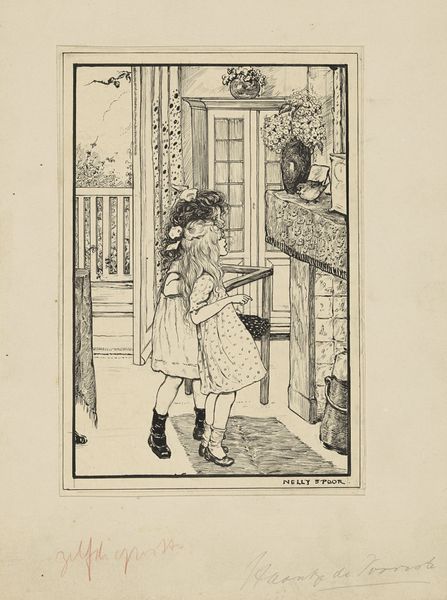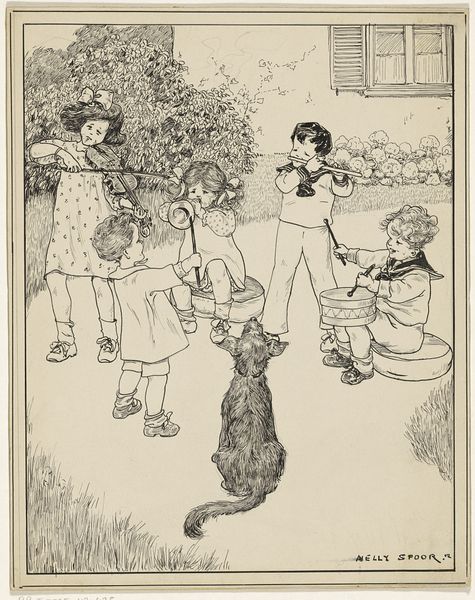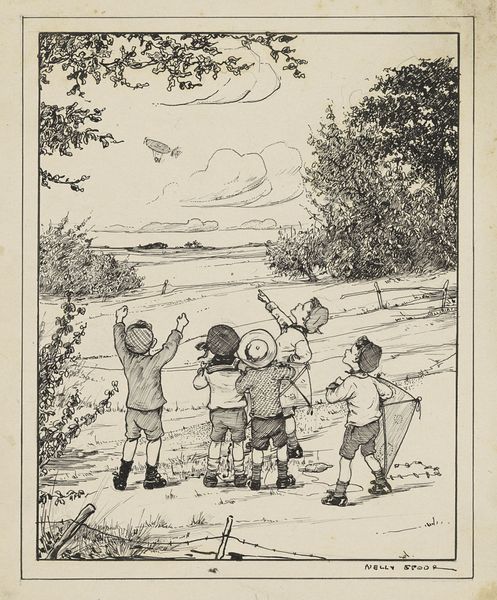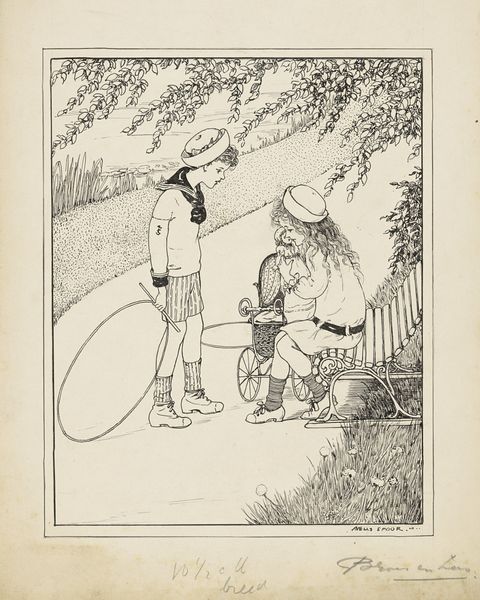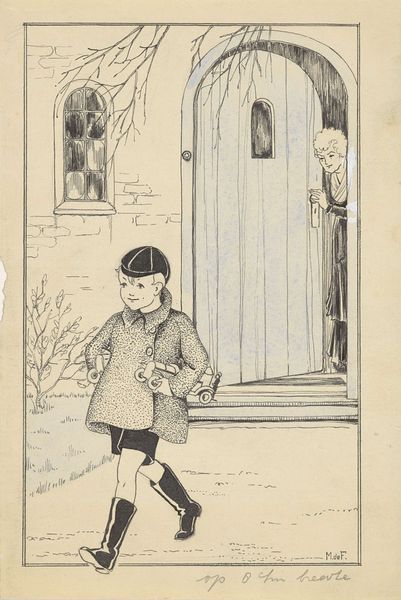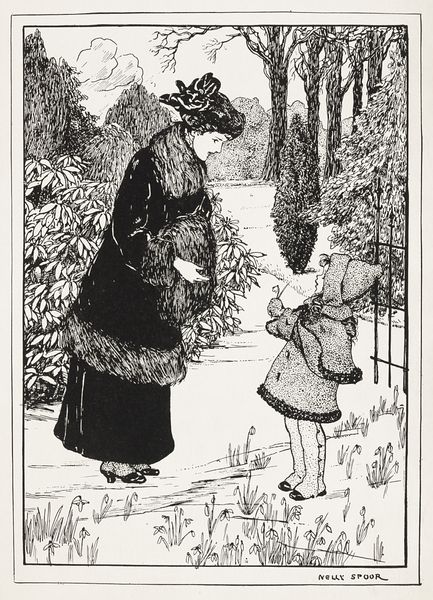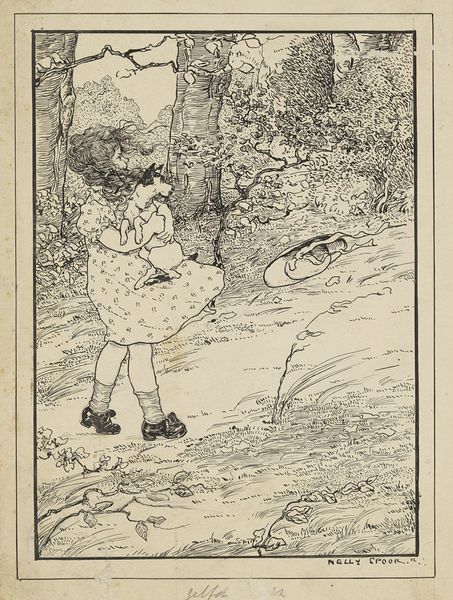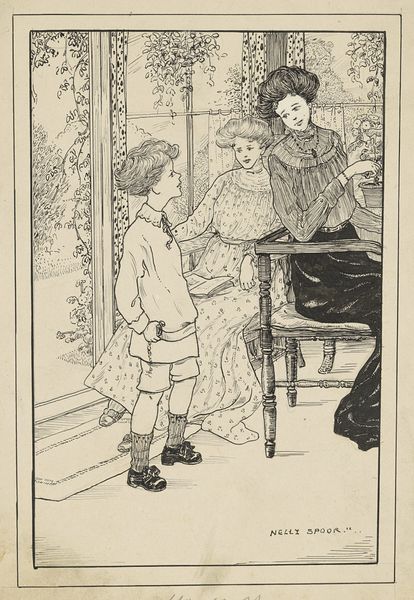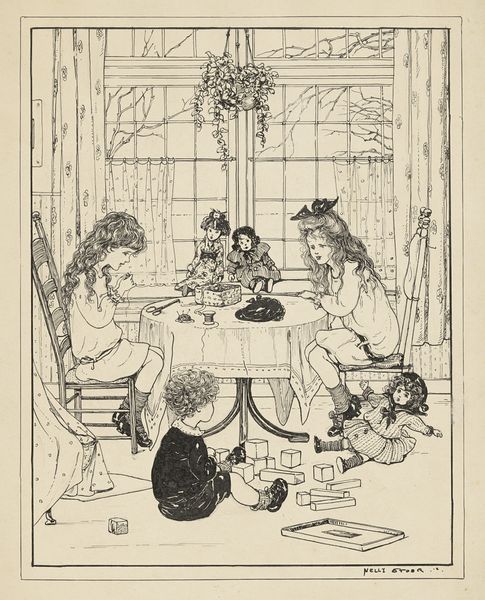
drawing, paper, pen
#
portrait
#
drawing
#
comic strip sketch
#
imaginative character sketch
#
narrative-art
#
cartoon sketch
#
figuration
#
paper
#
personal sketchbook
#
idea generation sketch
#
child
#
sketchwork
#
folk-art
#
sketchbook drawing
#
pen
#
genre-painting
#
storyboard and sketchbook work
#
cartoon carciture
#
sketchbook art
Dimensions: height 218 mm, width 182 mm
Copyright: Rijks Museum: Open Domain
Curator: Looking at this pen and ink drawing by Nelly Spoor, dating back to 1916, titled "Frits en Janneman voor Tommy's deur," I'm immediately struck by the dynamism achieved with such simple means. The density of the line work creates texture and form in a remarkable way. Editor: My first impression is one of dampness and childhood drama. The children huddle under a comically oversized umbrella; there’s a sense of yearning in their posture, wanting to join the child at the door. What kind of world nurtured this artwork? Curator: That's an insightful read. Spoor was working during a period where children’s book illustration was gaining respectability. The emphasis on the handmade is quite apparent, you can practically feel the artist's hand moving across the paper creating the textures of rain and clothing. How this would have been circulated is interesting, lithography perhaps? The mass reproduction and availability of images for a wider audience. Editor: Right, it feels very much connected to early 20th-century social and cultural values concerning children's literature. Tommy, standing in the doorway, seemingly refuses entry. This refusal raises questions about social boundaries and the privilege of staying dry and indoors. The setting suggests a particular social class. Was this reflective of societal divisions at the time, perhaps influencing perceptions of childhood and access? Curator: Precisely. And I wonder how much Spoor considered the materiality of her work in shaping the narrative. The paper itself, the specific weight and texture. Also consider the tools themselves, which ones lend themselves best to the delicate yet definite lines seen here. The act of creating the sketch mirrors the intimacy and immediate storytelling of the children's world. Editor: It's fascinating how you connect the tangible aspects of production to the drawing's emotional content and social critique. The role of galleries is crucial here, considering where and how this drawing would have been displayed. I feel that would reflect or reject mainstream interpretations of the artwork's intention and relevance. Curator: Considering the materials then, we also need to note that the value imbued in this work goes beyond mere function to reveal layers of artistic intent and social engagement. Editor: Ultimately, viewing "Frits en Janneman voor Tommy's deur" brings forward questions about visibility and historical narrative that the piece represents. It has this interesting pull to both a specific cultural time while showing a rather simple childhood emotion.
Comments
No comments
Be the first to comment and join the conversation on the ultimate creative platform.
